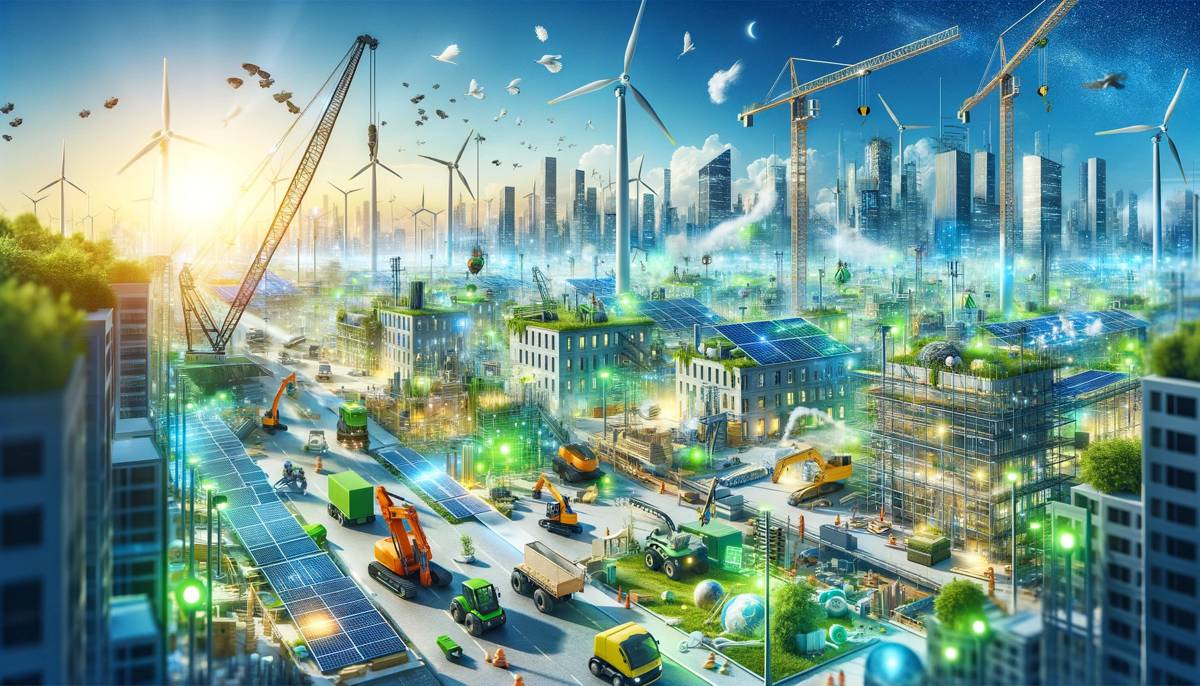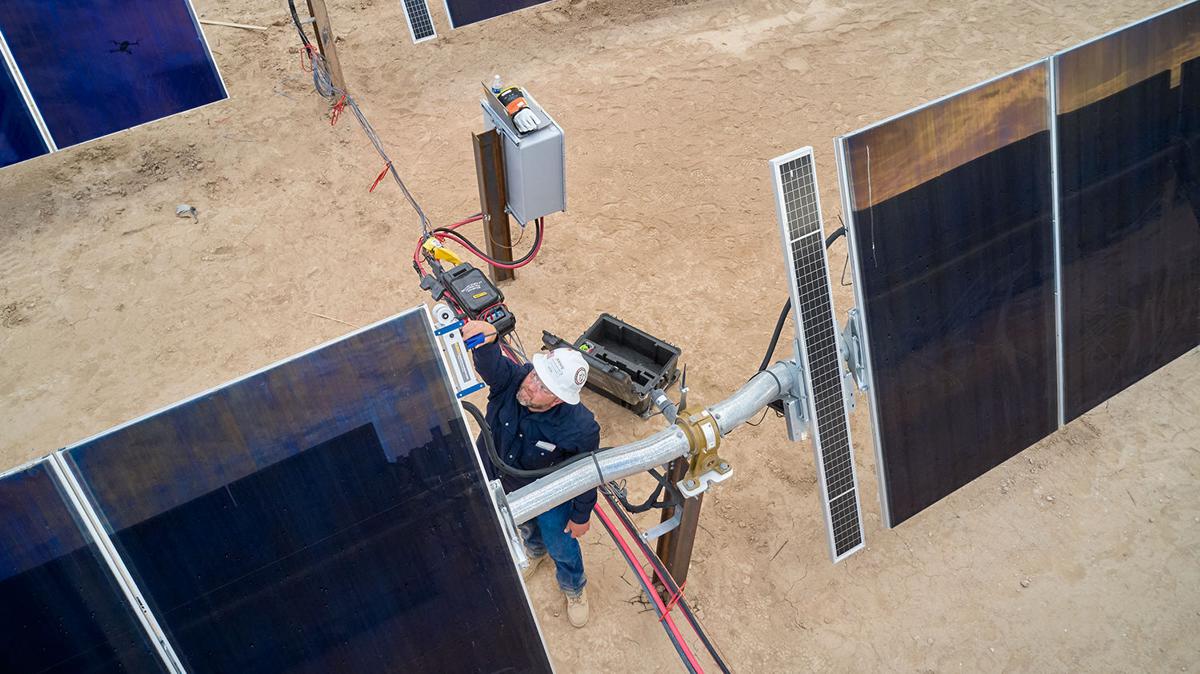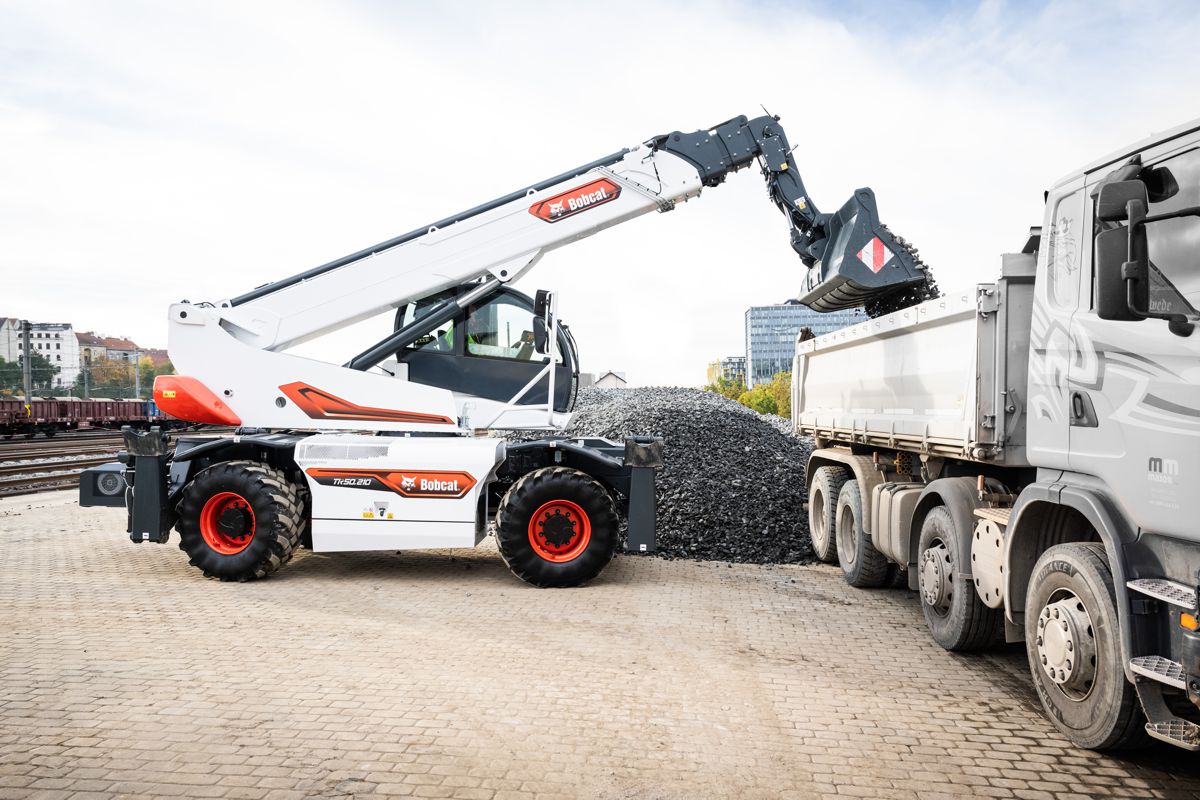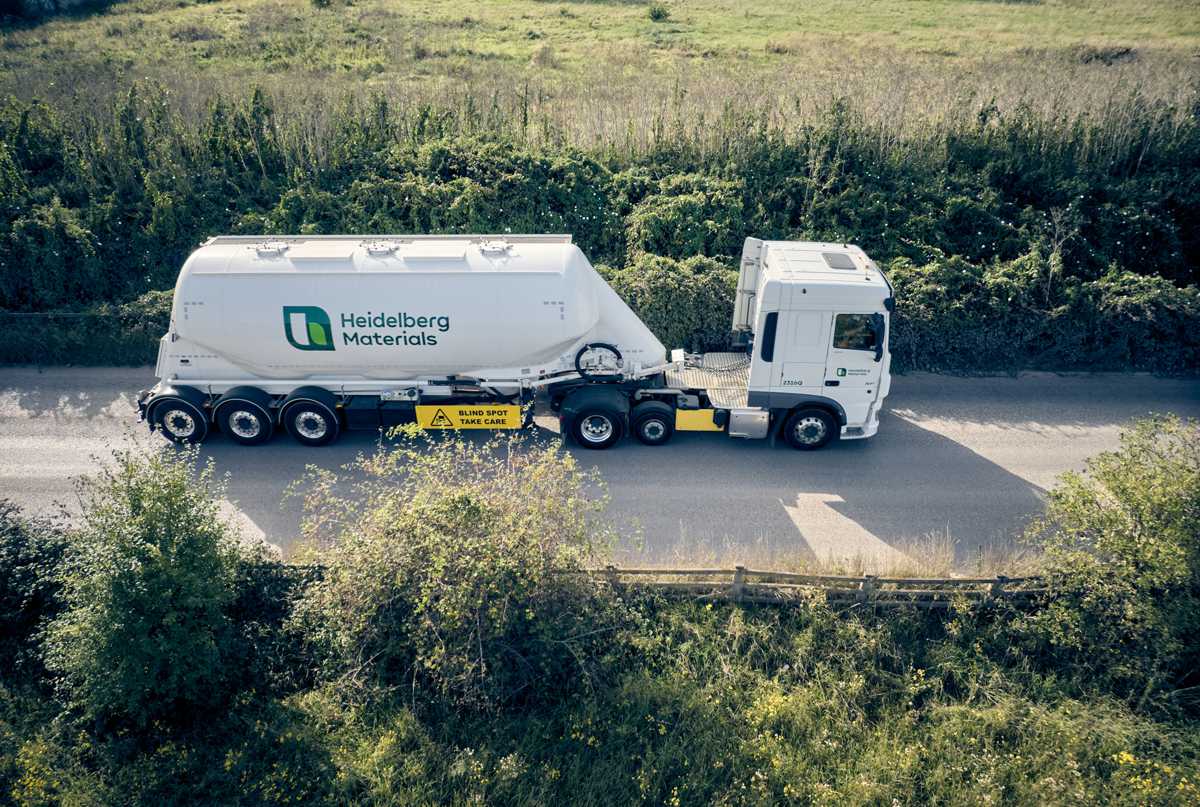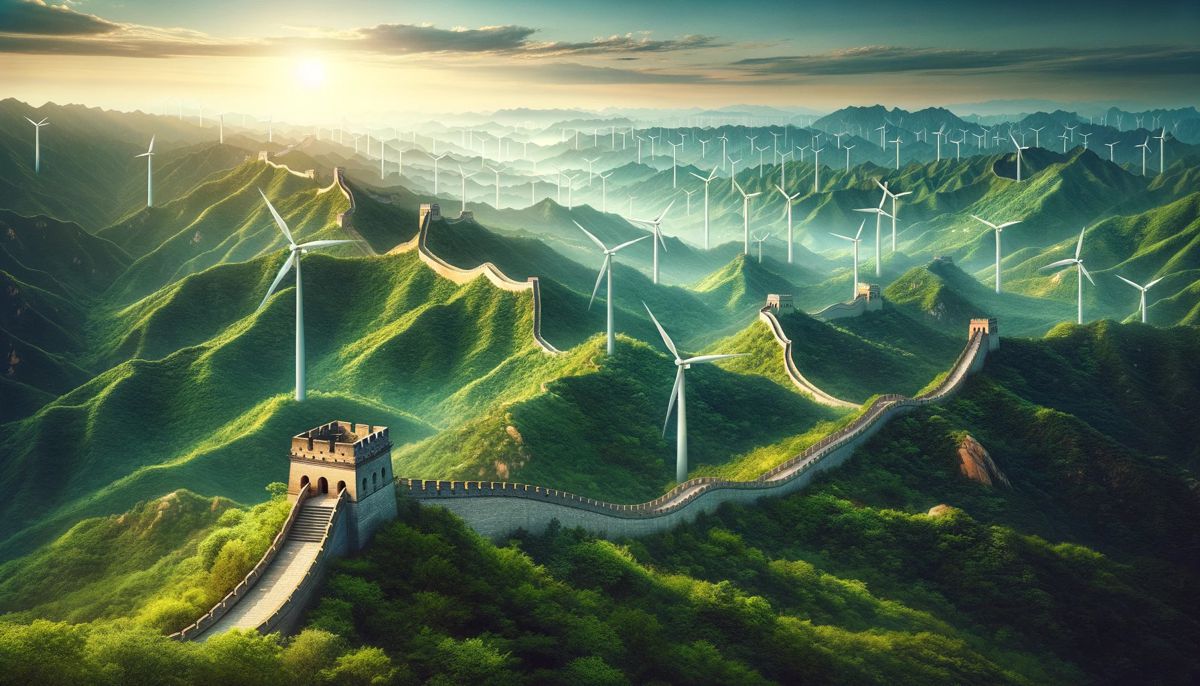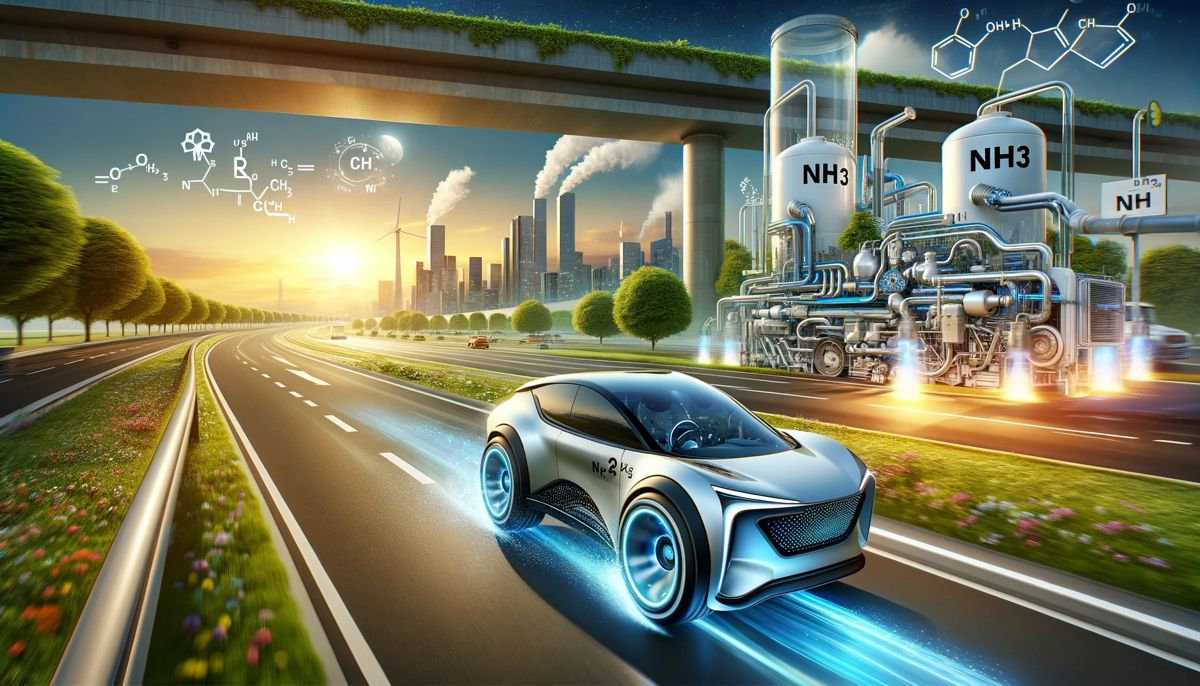Salaheddine Mezouar, president of the UN climate treaties conference COP22, said the event, which took place in Morocco in November, would allow “the voices of the most vulnerable countries to climate change [to be] heard, in particular African countries and island states.”
Allar Tankler took the opportunity to add to those voices – by discussing what the European Investment Bank (EIB) is doing on some of the islands most vulnerable to climate change to help them adapt to climate change, and to mitigate its effects.
But first, why invest in climate adaptation or mitigation measures on small islands at all? It isn’t only because of rising sea levels. There’s an economic development angle, too. Katrin Bock, Business Analyst in the EIB Pacific Regional Office points out that most of the islands rely on diesel shipped in on barges for energy. “Small-island developing states are often constrained by small and dispersed populations with no economies of scale. They have low bargaining power with oil suppliers and overall inefficient oil transport infrastructure.”
Island projects are mostly small scale and may thus be overlooked by international investors. So the EIB has taken special care to support the impact of climate projects on the islands.
Most of all, the mission is important: to assist communities that pay the full price of climate change, even though they aren’t the ones who created the problem.
AN AIRPORT ON THE COOK ISLANDS (Rarotonga, Size of this island 67.39 km2)
The Cook Islands comprises 15 islands. Almost 90% of the combined territory is less than 5 metres above current sea level. So when you hear scientists estimating sea levels rising by one to two metres, you can imagine what this means to residents of this island nation. Climate change can have dire effects on lives even before an island is submerged. The increased frequency of extreme weather events causes destruction, loss of lives and access to vital services.
The EIB has been providing technical assistance in the Cook Islands to assess options for relocating some infrastructure. The aim is to cut the potential impact of an extreme storm.
One of the dangers is that the main airport’s fuel storage which is located just between the runway and the ocean, could overflow the tarmac when the sea surges. That would make it impossible for flights to land or take off. If the airport were shut down for any length of time, the country’s major industry, tourism, could collapse, with dramatic consequences for many islanders. More importantly, the airport is the only viable way of getting help to the island after a natural disaster.
FIGHTING DROUGHT ON THE SEYCHELLES (Mahe, 157.3 km2, and others)
The Pacific is not the only place where climate change brings a big risk to small islands. One of the climate-change impacts experienced by the Seychelles islands is increasing drought. It used to be that Seychelles had a 3 month annual rainy season, providing enough water for all those tourists to take really long showers in the resorts. But now the droughts are getting longer.
The EIB loaned EUR 26 million to upgrade and expand water systems on three of the largest islands, to improve efficiency of the water systems and increase their resilience to climate change by diversifying and integrating resources that respond differently to drought conditions. Thus, less of the precious resource is lost and backup resources can be tapped in case of serious droughts.

SOLAR MICRO-GRIDS ON THE MALDIVES (size of the country 298km2)
Were it not for government subsidies, electricity on the Maldives would cost the consumer 20-25 times more than in Europe due to the logistics of getting oil to the distant islands is complicated and expensive. Oil imports add up to close to 35% of Maldives GDP, making the island nation one of the most oil-dependent nations in the world.
Now, the EIB is helping finance a EUR 175 million project to install solar photovoltaic plants, energy storage systems, more efficient diesel-engine generators and upgraded distribution networks on 160 islands. To mitigate climate-change impact on the Maldives, with the entire territory less than 5 metres above sea level, the solar systems will be mounted on structures 3-4 meters high so as not to be affected by sea level rise. They will also be able to withstand hurricane-force winds.

THE DAM ON SAINT LUCIA (617 km2)
In Saint Lucia the John Compton dam on the Roseau River forms a water reservoir used by most of the inhabitants. Hurricane Tomas (2010) and a severe, unnamed storm in December 2013 created landslides reducing the capacity of the reservoir by almost a third. It also silted up the water. Water is rationed during the hot season, which in turn hurts tourism, the eastern Caribbean island’s main source of income.
The EIB has launched a programme with the Caribbean Development Bank to help adapt infrastructure, including this dam.

SUSTAINABLE FORESTRY ON SOLOMON ISLANDS (Kolombangara, 750 km2)
On the Solomon Islands, the EIB invested in the first sustainable forestry operation in the Pacific region certified by the Forest Stewardship Council. With substantial illegal deforestation and logging of the natural rainforest rampant on the islands, the EIB provided Kolombangara Forest Products funding to replant close to 3750 hectares of poor quality tropical hardwoods and replace their ageing equipment. The investment showed that a sustainable forestry operation is economically feasible in the region.
The EIB is doing more on the Solomon Islands. One example of climate-change mitigation is financing the feasibility study of a major shift in how the island is powered. The goal of the Tina River hydro project is to produce enough electricity during the rainy season to completely meet the needs of the entire main island, instead of the current burning of diesel.

VANUATU RETRACTABLE WIND TURBINE GENERATOR (Efate, 899.5 km2)
When Cyclone Pam hit the South Pacific island republic Vanuatu last year, 320 kmh winds destroyed infrastructure, creating water shortages and shutting down telecommunications. The cyclone wiped out thousands of buildings, displaced 3,300 people, and killed 16. For Vanuatu, the cost of rebuilding was devastating.
But one vital facility rode out the storm. The turbines of the ingenious wind farm operated by France’s Engie and financed by the EIB at Devil’s Point were folded over and lashed to the ground as Pam approached. After the storm passed, instead of surveying a devastated facility, the operators simply cranked the turbines back up and got on with the production of electricity.
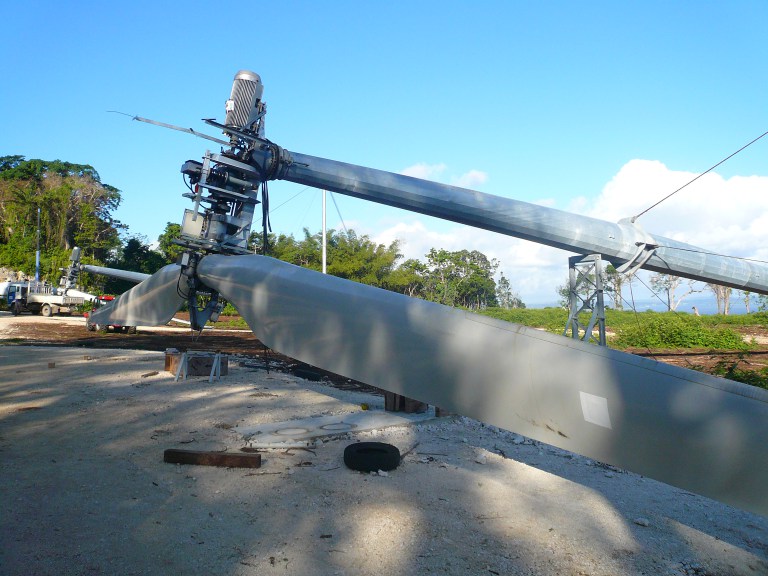
SAVING THE CORAL REEF ON CAPE VERDE FROM GREENHOUSE GASES (Santiago, 991 km2 )
In addition to adapting to climate change, inhabitants of small islands are trying to limit their own impact on the climate.
One of the most effective ways of doing this is, of course, by using more renewable energy sources such as wind. Cape Verde is 500 kilometres off the coast of West Africa. It’s an archipelago of 10 volcanic islands. On four of these, wind farms were set up in one of the largest wind projects in Africa, with EUR 45 million in funding by the EIB and the African Development Bank. Altogether 30 wind turbines were set up in 2011 and 2012.
Now, “on a perfect day”, Cabeólica, the company operating the farms, is able to produce up to 41% of the energy consumed on the island of Santiago, hosting the capital of Cape Verde. Mind you, “a perfect day” in wind-farm-operator-parlance translates to “hold on to your hat” kind of windy.
The wind farms will also help reduce greenhouse gas emissions on the archipelago, a biodiversity hotspot. Its coral reef is considered one of the world’s ten most important. This public/private partnership was awarded the ‘Best Renewable Project in Africa’ prize at the Africa Energy Awards 2011 in Johannesburg.
INNOVATIVE AIR-CONDITIONING AT A HOSPITAL IN FRENCH POLYNÉSIA (Tahiti, 1,045 km2)
The 430-bed hospital Centre Hospitalier de Polynésie accounts for 4% of the total electricity consumption in French Polynesia, an island country where 40 percent of energy is used for air-conditioning. As in the majority of other islands, electricity has traditionally been created by burning fossil fuels that have to be barged in, at great cost and considerable environmental risk, even before you start counting the CO² emissions threatening those very islands.
Now, the hospital will implement an innovative alternative, with the help of a EUR 7.5 million loan from the EIB. They will pipe in water from 900 metres deep in the ocean, flowing in at a cool 5 to 8 degrees centigrade. The water will cool the air circulated through the hospital. The system, with a total cost of EUR 25 million, is expected to halve the hospital’s electricity costs, an equivalent of more than EUR 3 million in savings annually.
This is not the only EIB project in French Polynesia. The EIB has facilitated credit lines to small and medium-sized projects with clearly demonstrable environmental benefits, one of which was Tahiti’s first photovoltaic farm, covering 7000 m2 and reducing oil consumption by 350 tonnes a year.
CLIMATE-CHANGE RESILIENT HIGHWAY ON RÉUNION (2,511 km2)
Building a new 6 lane highway on the coast of an island may not appear to have a positive climate impact at first glance. But this is what a EUR 500 million EIB loan will help do on Réunion. One big reason is to provide safety from the sea.
The more climate-resilient road will ensure connections for locals and tourists all year long in contrast to the existing road, which is exposed to major natural risks such as falling rocks and high seas. Special attention is being paid to the project’s environmental aspects, including the creation of artificial reefs and ecological corridors to preserve terrestrial ecosystems, and the installation of a water purification and treatment plant to preserve marine ecosystems.
Plus: two lanes of the highway will be reserved for public transport. Easing traffic jams will hopefully have a positive effect on fuel being burned as well.

IMPROVING WATER FACILITIES IN THE FACE OF FIJI’S CLIMATE (Viti Levu, 10 388 km2)
On the Fiji islands, the government has deemed the improvement of water and sanitation a priority due to both rapid urbanisation and frequency of extreme weather events. The EIB is in the final stages of assessing a USD 75 million loan, joining other donors such as the Asian Development Bank and the Green Climate Fund. The loan would upgrade and construct water supply and wastewater collection and treatment systems in the greater Suva area.
The project will include relining 13 km and upgrading 18 km of wastewater mains. It will increase the network’s capacity to serve an additional 15% of the households on the island which currently rely on septic tanks.

CYCLONE-PROOF WIND FARM ON NEW CALEDONIA (16,372 km2)
In New Caledonia, locals remember Cyclone Jasmine, a category 4 storm (on the Saffir-Simpson scale, with 5 being the worst) from 2012. However, an EIB credit line provided to local banks helped set up an Eole wind farm employing tilting towers. These survived the 280 kmh winds of Cyclone Jasmine. They continue to produce 9.4 GWh a year, saving more than 2000 tonnes of oil from being burnt every year.
The EIB also participated in setting up 10,000 solar panels, 40 km from the capital Nouméa. This has been enough to power 1000 homes in the Helios Bay region.
REDUCING THE NEED FOR 4-WHEEL DRIVE ON TIMOR-LESTE (Timor, 30 777 km2)
The island of Timor is not a small one and the nation of East Timor, or Timor-Leste as it is properly known, is home to some 1.1 million people. But it is no less subject to changing climate impacts that require more than their fair share in adaptation and mitigating action.
When EIB consultant Jette Ravn recently went there to prepare a road safety project, she was shocked to hear a less than 50 km road between the north and south part of the island would take up to 4 hours to travel. “They told me you cannot go without four-wheel drive, or if it rains, you’ll have difficulties getting out,” she recalls.
And it rains a lot during the wet season.
The road is the centre of everything. Locals run fruit stands along it. Kids use the road to get to schools. To improve the roads, make them safer, and more resilient to deteriorating climate conditions, the EIB and the Asian Development Bank jointly approved a EUR 164 million project to rehabilitate and upgrade roads there.

The European Investment Bank
The EIB is the “European Union’s” bank. The only bank owned by and representing the interests of the European Union Member States and works closely with other EU institutions to implement EU policy.
The world’s largest multi-lateral borrower and lender, the EIB provides finance and expertise for sustainable investment projects. More than 90% of the EIB’s activities are in Europe, but they are also a big investor around the world.
The Author of this article Allar Tankler, works at the European Investment Bank, and writes about the impact the Bank makes on lives around Europe and beyond.







